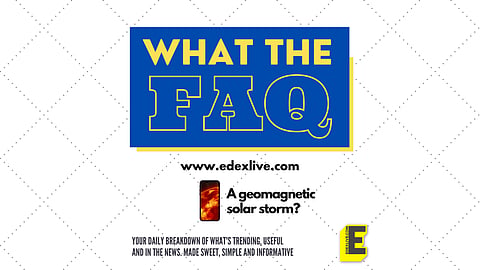

There has been activity in the Sun that can be cause for concern to us Earthlings. Our nearest star has exploded with a geomagnetic storm. But if you believe it can be the end of life as we know it, don't worry! It is only set to cause coronal mass ejections. Don't know what that means? Rest assured as we decode the hard science behind it for you in this edition of What the FAQ.
So what really happened to the Sun recently?
On April 11, a dead sunspot named AR2987 exploded and NASA's Solar Dynamics Observatory recorded the eruptions. This is pushing plasma and high-intensity towards the inner planets, including Earth. Experts suggest that these geomagnetic storms could arrive on our planet on April 14 at a speed of 20,69,834 kilometres per hour.
What are sunspots?
Sunspots are dark regions on the surface of the sun. They are caused by intense magnetic flux from the Sun's interior. These spots are temporary and can last anywhere from hours to months. They are also regions of reduced surface temperature caused by concentrations of magnetic flux that inhibit convection. It is from here that coronal mass ejections originate.
What are coronal mass ejections?
The Sun is currently at the start of a new 11-year solar cycle, which means that solar spots, eruptions and flares will grow more intense and extreme. A CME or coronal mass ejection is a huge expulsion of plasma from the Sun's outer layer or corona. These expulsions shoot through space and can hit Earth. But luckily, today's storm is only likely to be a G2 class storm, which is classed as 'moderate' on the American National Oceanic and Atmospheric Administration scale. The scale has levels ranging from G1 to G5.
What could be the repercussions of the storm?
This kind of storm is considered to be moderate and can damage high-latitude power systems. It can affect the power grid systems and any spacecraft in orbit. These can also have wildlife implications as they tend to confuse migrating animals that rely on Earth's magnetic field for a sense of direction. One good thing about solar storms is that light displays like the northern lights can be seen in the sky. These natural light displays are called auroras and are examples of Earth’s magnetosphere getting bombarded by solar wind, which creates pretty green and blue displays. The solar storm may also impact internet connectivity. But overall, there would not be any significant impact on human livelihood. It is not time to face the apocalypse. Yet.
